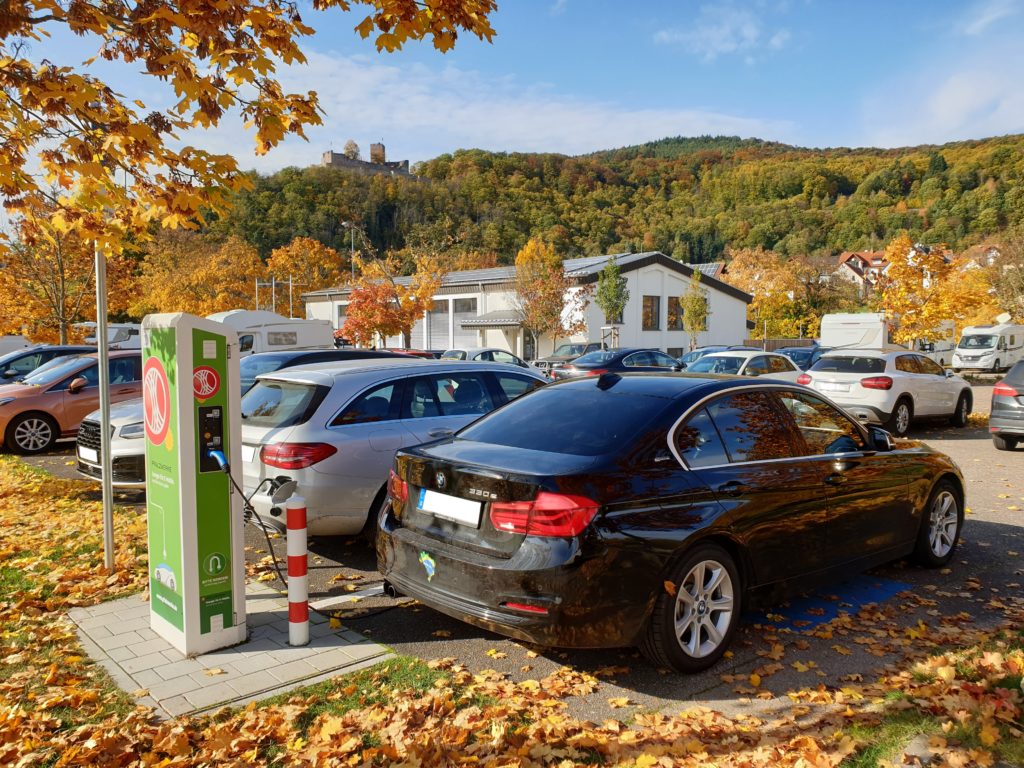BMW 330e (PHEV) Learnings
Since 23-Jun-2020, I have used my hybrid electric car, a BMW 330e iPerformance (F30 platform), built in 2016. I bought it from the BMW branch office in Kirkel, and I have gained quite some experience with this model since then. While some learnings may be unique to this type of car, I believe that a great deal of my experience is also applicable to other plug-in hybrid vehicles (PHEV). My experience is not applicable to electric-only cars (battery electric vehicles aka BEV).
These are the points that I would like to hightlight to someone interested in buying or using a PHEV:
General Points
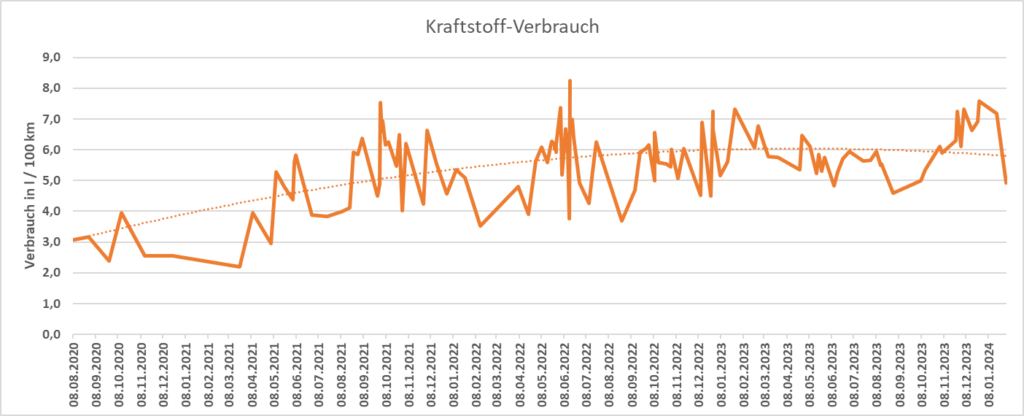
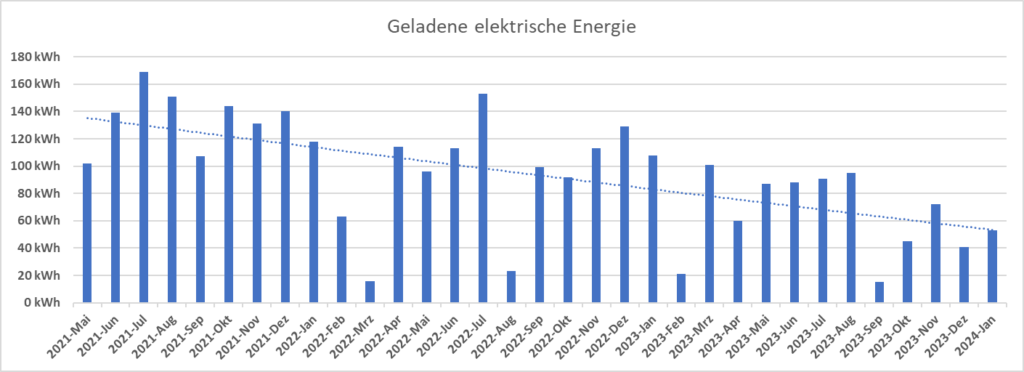
Pure electric Mode (MAX eDRIVE)
- I use the purely electric mode (MAX eDRIVE) when I know that I can achieve my whole trip with the electric charge of the battery (e.g., shopping in the nearby city). When I already know that this will not be possible or when I do not yet know the extension of my whole trip, I leave the car in the default mode AUTO eDRIVE.
- I can reach a realistic maximum range of 24 km under very good conditions (no need to brake too often, summer, flat terrain). When temperatures fall, this range decreases to 15 km, and below +3°C, MAX eDRIVE does not really make sense, as the combustion engine will kick in as soon as I would accelerate only modestly.
- I get a real consumption between 0,20 kWh/km (summer time, little start-and-stop) and 0,32 kWh/km (winter time, a lot of start-and-stop). Pre-heating the car in winter would bring the consumption closer to the summer time values, but pre-heating also has a cost to it. Below are some examples of electricity consumption at various conditions.
- Driving with the electric machine in the BMW 330e is different than driving a BEV. In a BEV, you usually do not have a gearbox, and there is a fixed transmission ratio between the rotation of the electric machine and the axis. In the BMW 330e however, the electric machine is located before the gearbox, and in fact it cycles through a range of gears. In fact, even before you start to roll, the electric machine rotates with a certain idle rotation and is phased in via the clutch of the automated gearbox (ZF GA8P75HZ [1], [2]). Using the smartphone app from [3] and the ODB2 adapter from [4], I undertook some measurements in the modes Sport, Comfort, and Eco, and I found the following results:
- The switching from one gear to the next one does not seem to be related to the mode. While the “feeling” of the Sport mode is definitively more agile than the one of the Eco mode, this does not translate in earlier to later switches to the next gear when using the purely electric mode.
- During acceleration, the switch from one gear to the next higher gear seems to happen around 3000 rpm of the electric machine.
- At no load (releasing the accelerator pedal), switching down to lower gears seems to happen around these rotations:
- From 6→5: 1800 rpm
- From 5→4: 1600 rpm
- From 4→3: 1400 rpm
- From 3→2: 1300 rpm
- From 2→1: 800 rpm
Examples of electricity and fuel consumptions
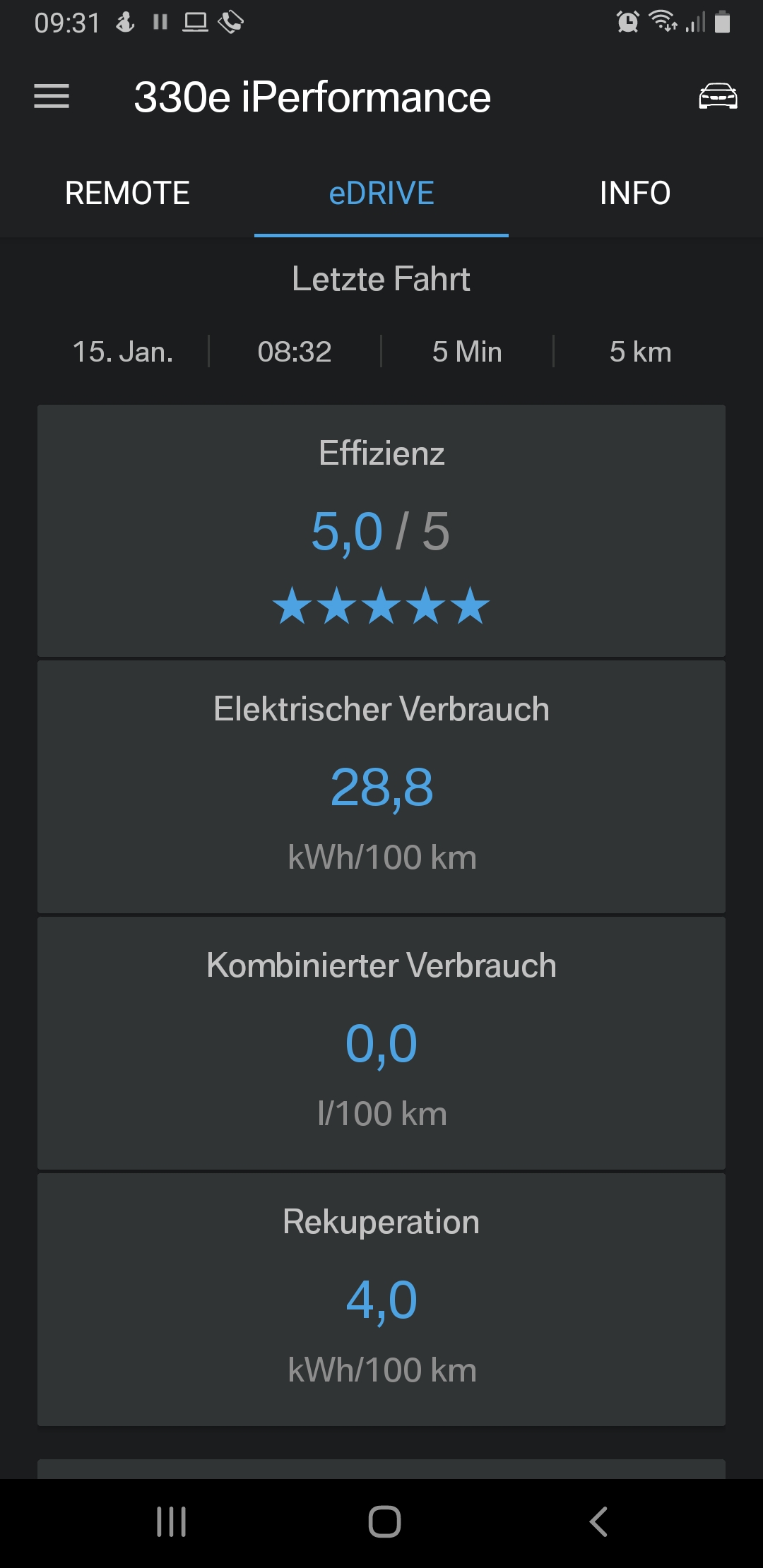
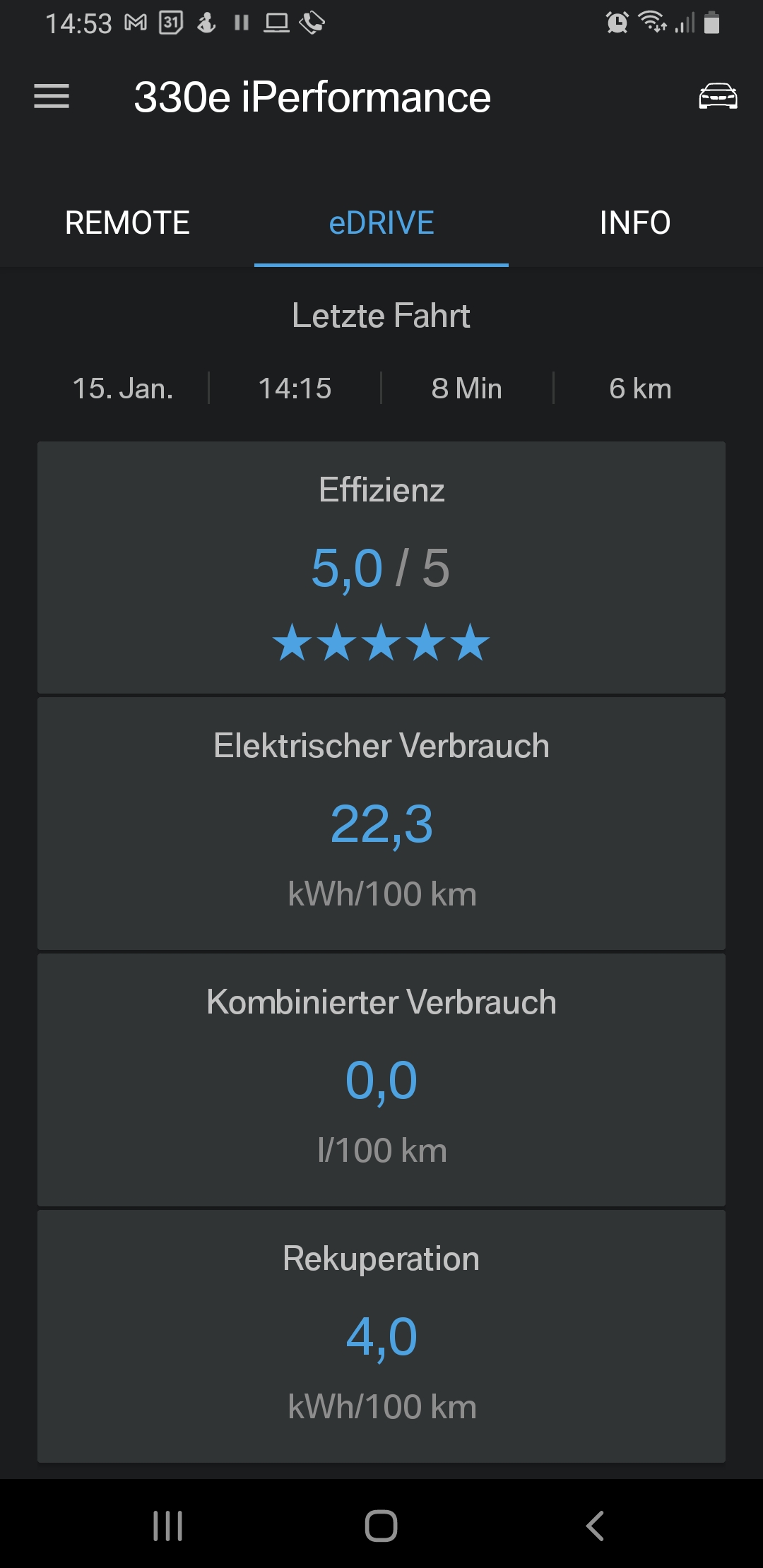
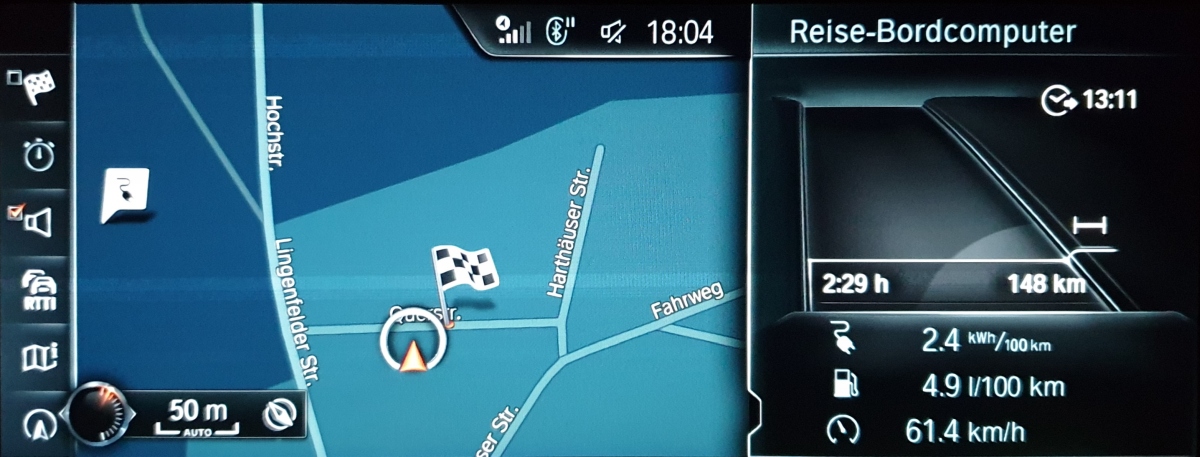
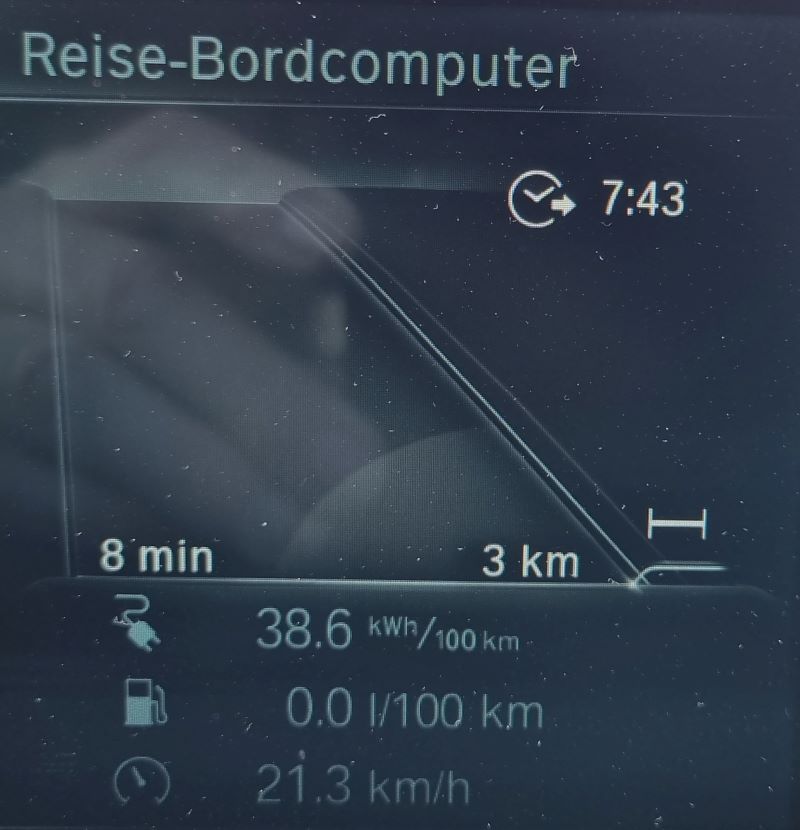
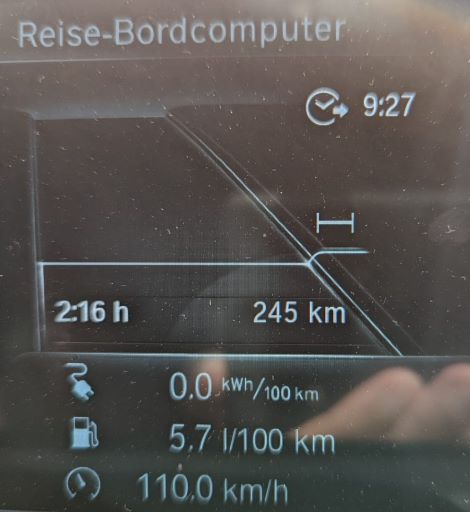
Public Charging
- While things have become better, public charging can still be some kind of adventure where you can have unpleasant surprises in some cases. However, I can state that things have become much better than in the early days.
- Tariffs can vary greatly, from reasonable to outrageously expensive. One must check the tariffs at the charging station just before each recharge again, as they can change from one day to the other. Even then, this does not mean that you will also be charged the cost that is advised in the app.
- With the consumption values given above, I have set my personal limit at 0.45 €/kWh. If the tariff is higher than that, I am equally or better off if I use the combustion engine.
- Most operators will charge you additionally if your car stays longer than 3h…4h at one charging point. So be aware to stay within this duration. A few operators however have the nasty habit to charge you 0.10 €/min from the first minute on, in addition to the electricity cost. On the other side, they are a few operators that do not charge you such a penalty during the night; so you can safely start charging the car over night.
- In a large German city (Cologne), I have observed the following issue: As parking is free of charge while you are charging the car and as the parking fee on other locations is expensive, there seem to be people that connect their car on Friday evening and leave it connected at the charging point until Sunday evening. While they have to pay a penalty for exceeding the time limit (many operaters start to charge penalties after 4h), the penalty is often capped at around 12 € and therefore still much cheapter than paying for the parking fee that would otherwise have to be paid. Therefore, too, it might be difficult to find a free charging station in the center of the city.
